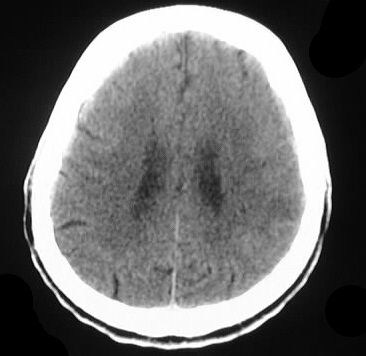


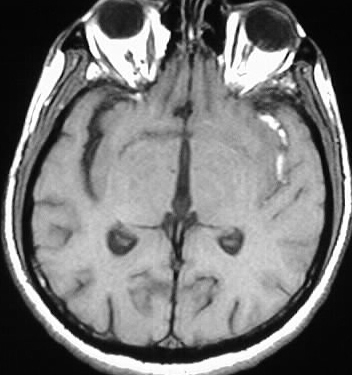
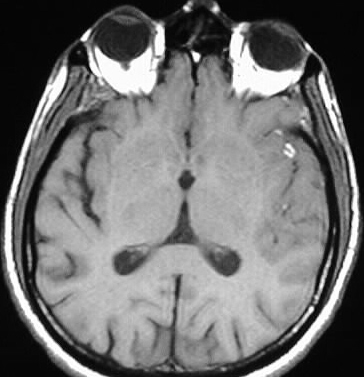
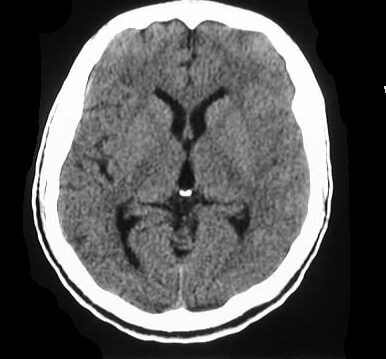
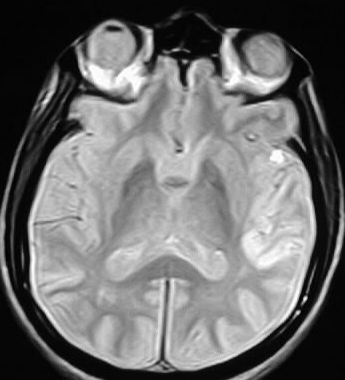
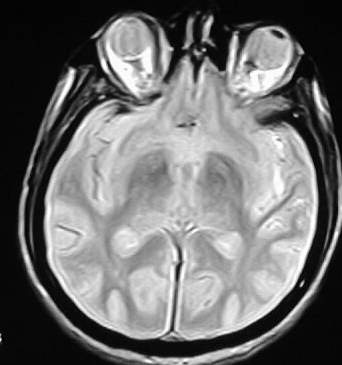
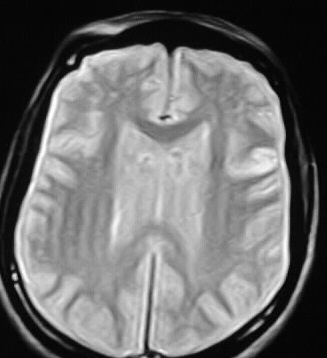


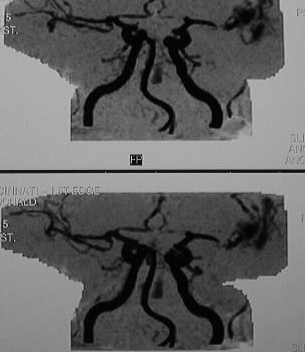
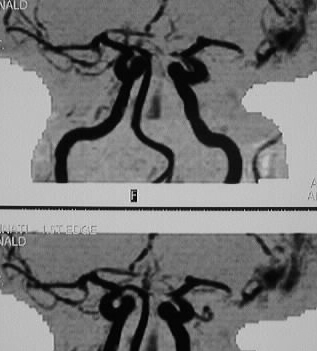
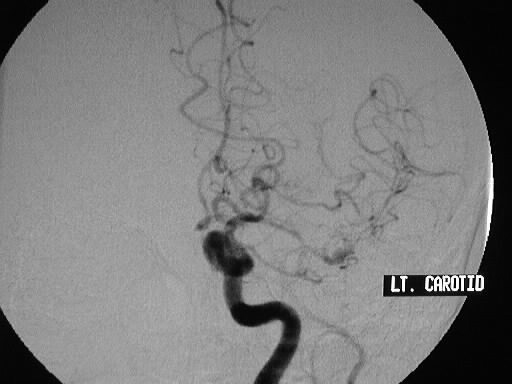
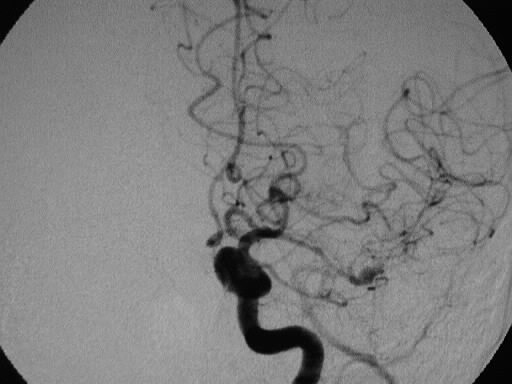
Delayed presentation of L MCA aneurysm
Findings:
Axial noncontrast head CT shows effacement of the left
sylvian fissure, with subtle hypodensity and edema in the left MCA distribution.
Axial T1, PD, and T2WI show spotty hyperintensity in the left sylvian fissure,
associated with signal abnormality in the left frontotemporal region. MRA
shows lack of normal flow signal in the left MCA in the region of the trifurcation,
with additional signal in this area due to surrounding blood products.
The arteriogram demonstrates an aneurysm of the left MCA trifurcation and
severe spasm of the left M1 segment.
Discussion:
A well known and dreaded complication of aneurysm rupture
is vasospasm which is typically manifest approximately 7 days after initial
symptoms. Occasionally patients may not present for medical attention when
they have severe headache from the rupture, and only come in later when
they have a focal neurologic deficit due to ischemia from vasospasm. At
this time the subarachnoid hemorrhage has become isodense on CT and the
aneurysm is usually not apparent. In this case, MR/MRA is helpful to show
the blood products and vasospasm which suggests an underlying aneurysm.